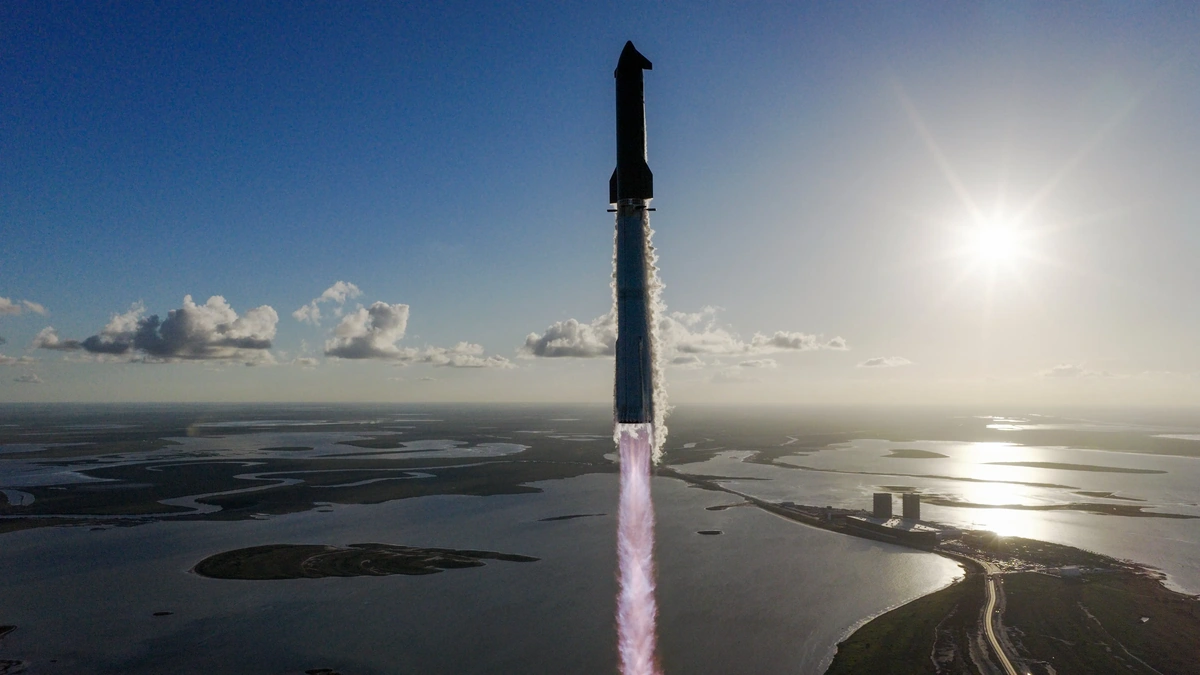Okay, let’s be real. We’ve all been glued to our screens watching SpaceX’s Starship saga unfold. It’s like a real-life space opera, full of drama, explosions, and, finally, a glimmer of hope. This isn’t just another rocket launch; it’s a potential game-changer for space travel, and more importantly, for our dreams of becoming a multi-planetary species. So, what exactly happened with Starship V2 , and why should you, sitting in your chai-sipping spot in India, care?
The Near-Perfect Imperfection | Understanding the Flight

First, let’s address the elephant in the room: it wasn’t entirely perfect. There were hiccups. But here’s the thing: perfection isn’t the goal in early testing – progress is. SpaceX aims for rapid iteration, meaning they want to learn from failures just as much as from successes. This flight demonstrated controlled ascent, stage separation, and, crucially, reentry. Reentry is the fiery crucible where many spacecraft meet their doom, and Starship V2 handled it like a champ (mostly!). The fact that it survived reentry with minimal damage is a testament to the engineering prowess of SpaceX. We’re talking about temperatures that would melt most metals, and Starship shrugged it off. So, even with the “rapid unscheduled disassembly,” the overall accomplishment is monumental.
Why This Matters | The Mars Dream and Beyond
Here’s the ‘why’ angle: Space travel isn’t just about planting a flag on another rock; it’s about ensuring the long-term survival of humanity. Earth, as beautiful as it is, isn’t immune to catastrophes – asteroids, supervolcanoes, or even self-inflicted wounds like climate change. A self-sustaining colony on Mars offers a backup plan, a lifeboat for our species. And Starship, with its massive payload capacity and reusability, is the only vehicle currently on the horizon capable of making that dream a reality. What fascinates me is the potential for affordable access to space. Think about the possibilities for scientific research, resource utilization, and even tourism! The cost of launching things into space has been a major barrier, and Starship promises to break that barrier down.
The Road to Starship V3 | What’s Next?
So, Starship V3 . What can we expect? Well, if SpaceX’s history is any indication, we’ll see rapid improvements based on the data collected from V2. We’re talking about refinements to the heat shield, improvements to the engine performance, and likely some tweaks to the landing procedures. The goal is full reusability – a rocket that can launch, land, and be ready to fly again with minimal refurbishment. This is the holy grail of space travel, and SpaceX is getting closer with each flight. But, and this is a big but, there are challenges ahead. Reaching Mars will require overcoming significant engineering hurdles, including developing life support systems, radiation shielding, and the ability to extract resources from the Martian environment. But if anyone can do it, it’s Elon Musk and his team of rocket scientists. Let me rephrase that for clarity, they are the ones who are putting in the work, and that’s what matters.
India’s Role in the New Space Age
India, with its own burgeoning space program, stands to benefit immensely from these advancements. ISRO (Indian Space Research Organisation) has already demonstrated its capabilities with missions like Chandrayaan and Mangalyaan, and Starship could potentially open up new avenues for collaboration and scientific discovery. Think about it: joint missions to the Moon or Mars, utilizing Starship’s capabilities to deploy Indian satellites, or even contributing to the development of Martian habitats. The possibilities are endless . The global space community is becoming increasingly interconnected, and India is well-positioned to play a leading role. It’s not just about competition; it’s about collaboration and sharing knowledge to advance the common goal of space exploration.
Reentry Success
Achieving a near-perfect reentry is a major step forward. It validates the design and materials used in Starship’s heat shield. But, here’s the thing: reentry is incredibly complex. The spacecraft is subjected to immense stress and heat, and even minor imperfections can lead to catastrophic failure. That Starship V2 survived reentry, even with some damage, is a testament to the robustness of its design.
FAQ Section
Frequently Asked Questions
What were the major achievements of the Starship V2 flight?
The flight demonstrated controlled ascent, stage separation, and successful reentry.
What is the significance of Starship’s reusability?
Full reusability dramatically reduces the cost of space travel.
How might India benefit from Starship’s development?
It can open new avenues for collaboration, scientific discovery, and joint missions.
What are the biggest challenges facing Starship’s Mars ambitions?
Engineering challenges like life support systems, radiation shielding, and resource extraction.
So, there you have it. Starship V2’s near-perfect flight is more than just a cool spectacle; it’s a crucial step towards making humanity a multi-planetary species. And while the road to Mars is still long and arduous, the progress being made is truly inspiring. Remember, this journey is one giant leap for all of humankind!
As per NASA , collaboration in space will only increase in the coming years. Check out our page.




